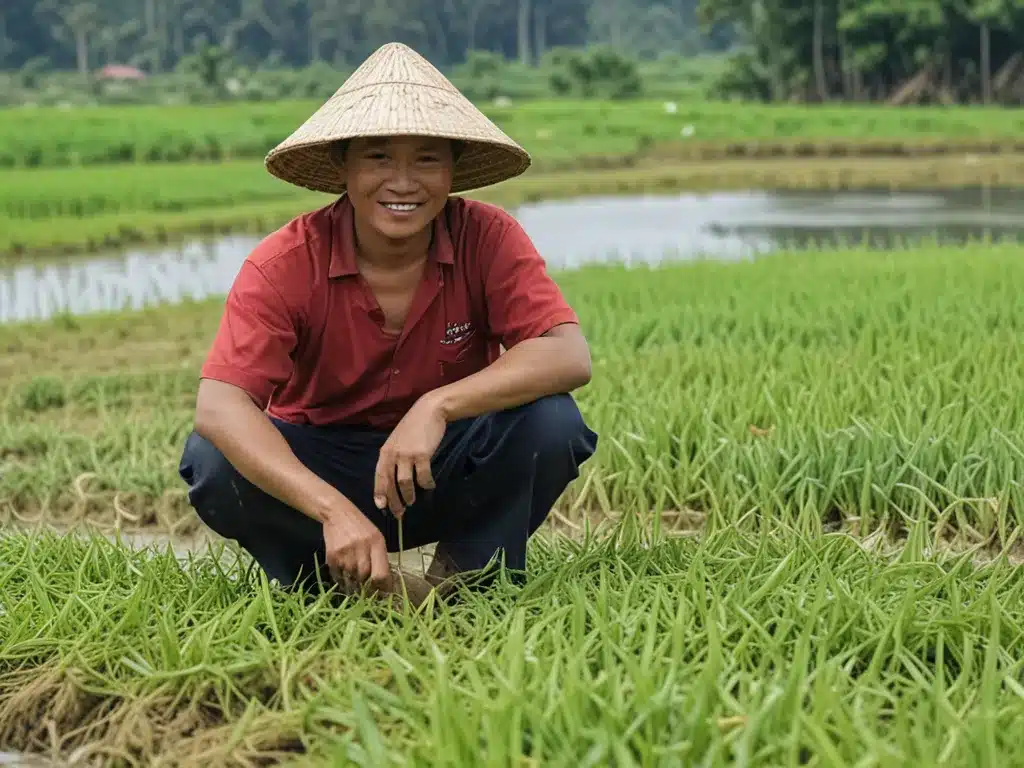
Rice Production in South East Asia
Rice is a staple crop for many in South East Asia, with over 500 million people relying on it as their primary food source. Vietnam, Thailand, Cambodia, and other countries in the region produce vast quantities of rice each year to meet domestic demand and for export. However, smallholder rice farmers who grow the majority of the rice face many challenges. As globalization increases competition from large-scale industrialized farms, climate change brings unpredictable weather patterns, and input costs rise, their livelihoods are threatened.
Rice farming is back-breaking work that is tightly connected to the land. Many families have farmed the same plots for generations, with their livelihoods and communities centered around sustainable rice production. However, global market pressures now pose risks to this way of life. While export earnings from rice are important for national economies, supporting smallholders is vital to alleviating rural poverty and food insecurity. Transitioning to more intensive farming can improve yields but also requires investments that strain household budgets.
Challenges Faced by Smallholder Rice Farmers
There are several key challenges that smallholder rice farmers in the region must contend with:
Climate change has led to warmer temperatures, more unpredictable rainfall, and an increase in extreme weather events like droughts and floods. This makes it harder for farmers to know when to plant and harvest, and reduces crop yields.
Rising input costs for fertilizers, pesticides, fuel and equipment place a heavy financial burden on farmers. Many cannot afford recommended amounts of agrochemicals and must make do with less, impacting productivity.
Lack of access to credit and crop insurance means farmers have no safety nets and bear all production risks themselves. A single bad harvest can plunge a household into debt and poverty.
Many farmers are close to retirement with few enthusiastic to take over. Youth are moving to cities for better prospects, leading to an aging farming population and concerns over future food security.
While exporting is important for countries, farmer incomes have not risen with international rice price fluctuations. Middlemen often dictate low prices to farmers but sell at higher urban or international rates.
Supporting Farmers Helps Ensure Food Security
To address these challenges and protect livelihoods, governments and organizations are implementing various support programs focused on empowering smallholder rice farmers:
Capacity building initiatives provide training on better farming techniques like integrated pest management, seed varieties suited to conditions, and post-harvest practices to reduce wastage. This boosts productivity and incomes.
Cooperative networks help farmers gain bargaining power over prices by bulk selling to larger buyers. They can also obtain inputs and financing at lower prices through group purchases.
Table 1: Comparing independent and cooperative farming
| Independent farming | Cooperative farming |
|---|---|
| Sell individually at low farmgate prices | Bulk sell through cooperative at higher negotiated prices |
| Higher input costs through individual purchases | Lower input costs through bulk group purchases |
| No collective voice | Stronger representation and lobbying power |
Crop insurance programs protect farmers against losses from natural disasters. Premium subsidies and payouts for failed harvests safeguard livelihoods and investments in improved production.
Subsidized credit enables farmers to purchase recommended amounts of inputs, upgrade equipment and irrigation, and try new techniques. This raises yields while financial support reduces debt burden.
By supporting smallholders, governments and communities can address rural unemployment, poverty and food security challenges. These farmers are the backbone of domestic rice supply chains and play a crucial role in national and household nutrition. With the right interventions, they can continue productively farming the land for generations to come.
Case Study: Crop Insurance Helps Farmers in Vietnam
One effective approach has been Vietnam’s pilot crop insurance program, which launched in 2014 across several provinces. The government provides premium subsidies while an insurance company assesses satellite data and on-ground conditions to quickly payout claims for farming losses.
Nguyen Van Hoa from the Mekong Delta region was skeptical at first about spending money on insurance rather than inputs. However, when floods destroyed 70% of his rice crop one season, he received a timely payout that covered production costs and kept his family from starving until the next harvest.
“I will continue paying for insurance each year now. The small amount is worth it to have protection against disasters outside my control,” he said. With the financial security of insurance, Hoa was able to invest in a water pump and try growing a premium rice variety. This doubled his earnings the next season.
Other neighboring farmers have followed his example in recognizing insurance’s role in de-risking agriculture. The government now plans to expand the program nationwide based on its early successes in supporting resilient livelihoods.
Conclusion
Rice will remain a dietary and cultural staple across Asia for the foreseeable future. By addressing challenges faced in production, governments and communities can safeguard livelihoods and ensure stable, sustainable supplies of this important crop for domestic food security and export revenues. Tailored programs that empower smallholder farmers through capacity building, collectivization, financing access and risk management tools help strengthen rural agriculture as a source of incomes. With increased productivity and financial security, this next generation of farmers will be motivated to continue rice farming practices that have sustained their communities for generations.






